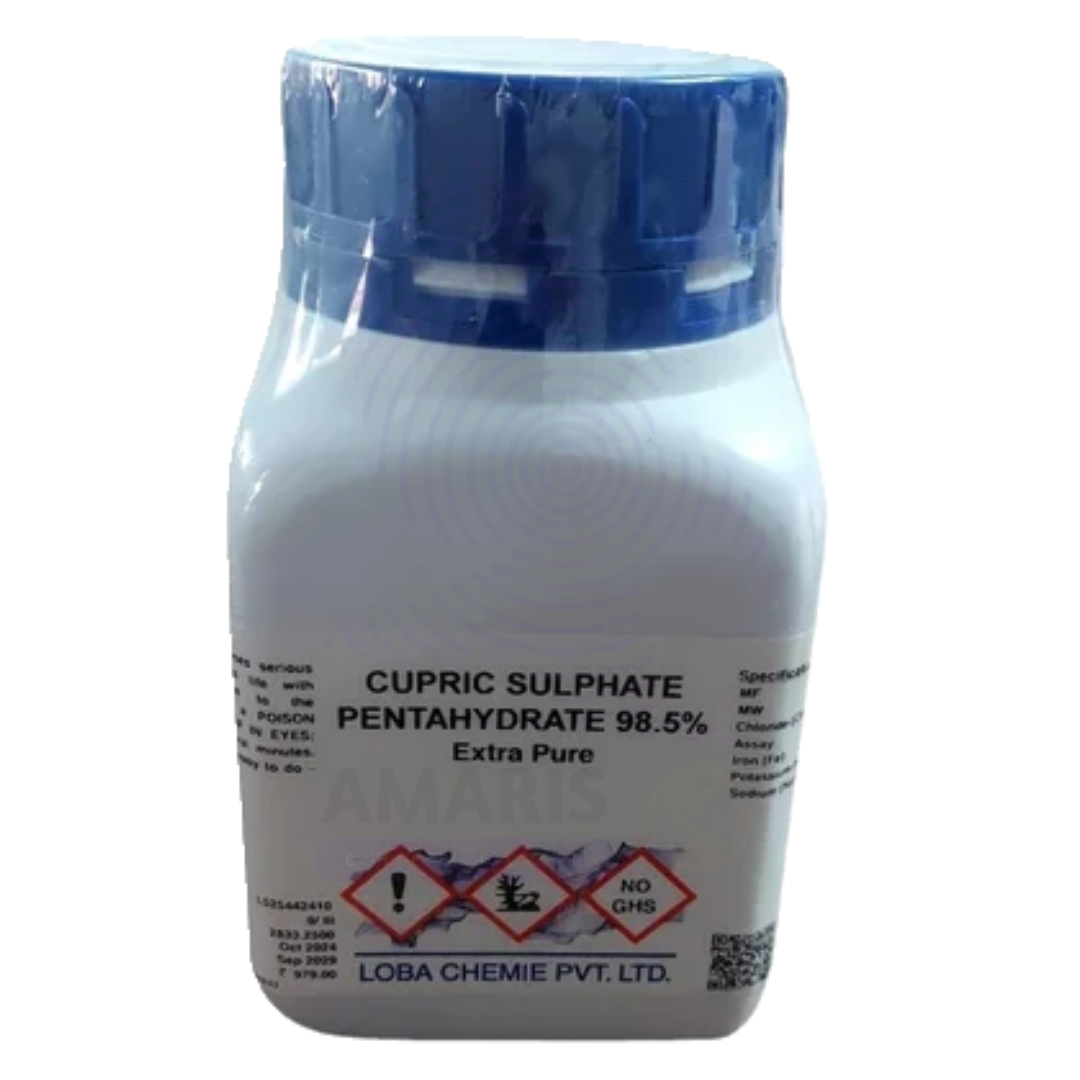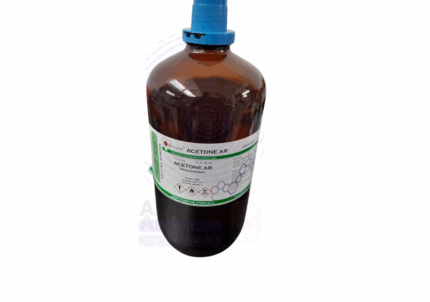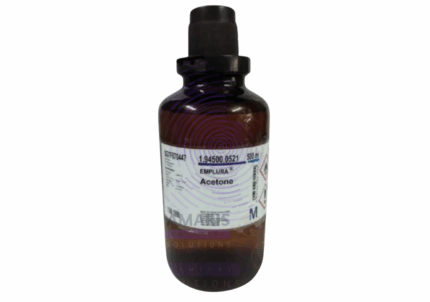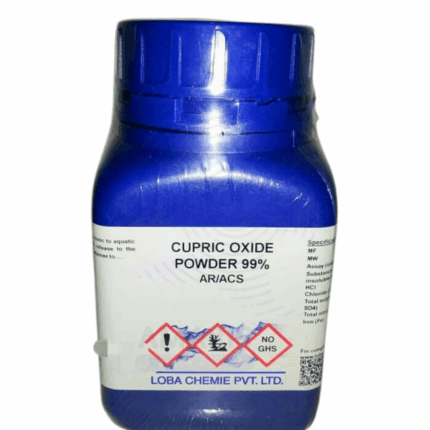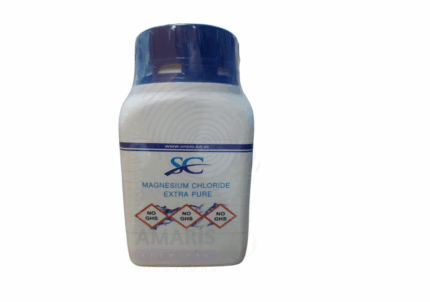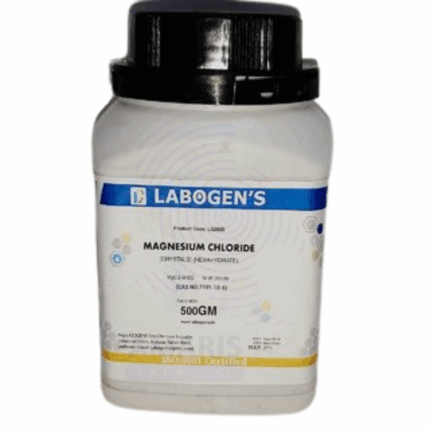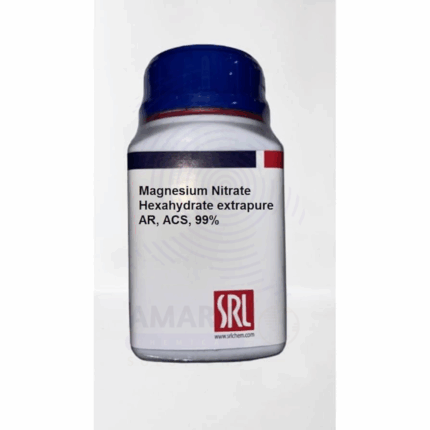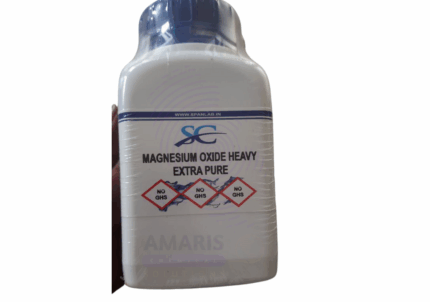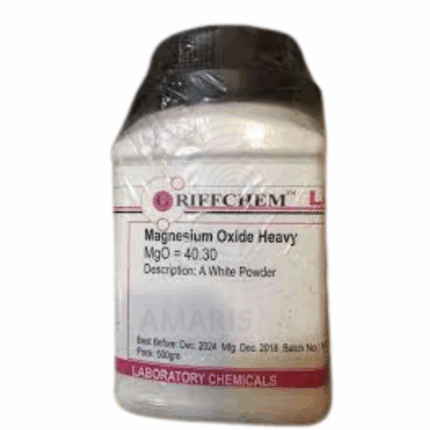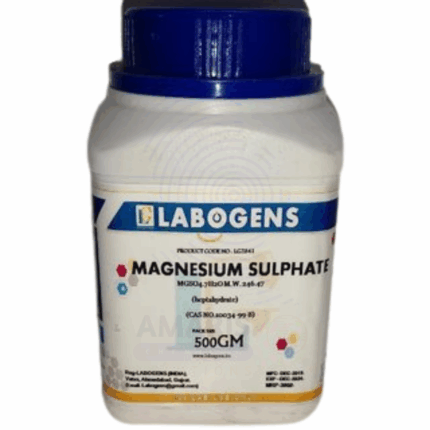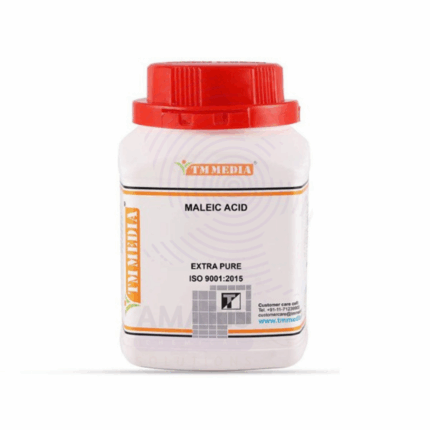


Cupric Sulphate Pentahydrate Extra Pure
$ 19.50 Original price was: $ 19.50.$ 19.32Current price is: $ 19.32.
Cupric Sulphate Pentahydrate Extra Pure is a vibrant blue crystalline compound widely used in laboratories for its high solubility and consistent copper ion content. It is essential in analytical chemistry for Fehling’s and Benedict’s solutions, in electrochemistry for plating and battery experiments, and as a biological nutrient in microbiological media. The pentahydrate form offers ease of handling and precise formulation in aqueous solutions. This extra pure grade ensures exceptional purity, making it suitable for teaching labs, research applications, and controlled experimental procedures. Store in a sealed container away from heat and moisture to maintain its crystalline integrity.
Cupric Sulphate Pentahydrate Extra Pure
Primary Uses
- Classic Analytical Reagent
- Widely used in qualitative tests (e.g., Benedict’s, Fehling’s, and Biuret tests) due to the distinct blue Cu²⁺ ion.
- Hydrated Mass Standard
- Preferred in labs where consistent hydration ensures reliable molar calculations (known 5H₂O content makes it predictable by weight).
- Educational Demonstrations
- Used to show crystal growth, hydration-dehydration cycles, and color transitions in copper chemistry.
- Copper Source in Electrochemistry
- Acts as a source of Cu²⁺ ions in electroplating, electrolysis, and galvanic cell experiments.
Secondary Uses
- Colorimetric Reactions
- Its vivid blue color is valuable in visual titrations, color tests, and indicator-style reactions involving copper.
- Thermal Studies
- Dehydration upon heating is used to demonstrate endothermic reactions and study hydrate loss curves.
- Fertilizer & Biocide (non-lab)
- Though not for lab use, it has external roles in fungicides, algicides, and micronutrient fertilizers—included here for general knowledge.
| PACK SIZE |
500 grams Plastic Tin |
|---|
1. Basic Identification Attributes
- Chemical Name: Cupric Sulphate Pentahydrate
- Common Name: Copper(II) Sulfate Pentahydrate
- CAS Number: 7758-99-8
- Chemical Formula: CuSO₄·5H₂O
- Molar Mass: 249.68 g/mol
- Grade: Extra Pure (Laboratory/Reagent Grade)
2. Physical & Chemical Properties
- Appearance: Bright blue crystalline solid
- Odor: Odorless
- Solubility:
- Soluble in water and methanol
- Insoluble in ethanol
- Melting Point: Loses water at ~110 °C
- Density: ~2.28 g/cm³
- pH (5% solution): ~4.0
- Stability: Stable under normal conditions; loses water when heated
3. Safety & Hazard Attributes
- GHS Classification:
- ⚠️ Warning
- H302: Harmful if swallowed
- H315: Causes skin irritation
- H319: Causes serious eye irritation
- H410: Very toxic to aquatic life with long-lasting effects
- NFPA Ratings:
- Health: 2
- Flammability: 0
- Reactivity: 1
- First Aid Measures:
- Inhalation: Remove to fresh air; get medical help if symptoms persist
- Skin Contact: Wash thoroughly with soap and water
- Eye Contact: Flush with water for at least 15 minutes
- Ingestion: Rinse mouth; seek immediate medical attention
4. Storage & Handling Attributes
- Storage Conditions:
- Keep container tightly closed
- Store in a cool, dry place away from acids and heat
- Protect from moisture and humidity
- Handling Advice:
- Use PPE: gloves, safety goggles, lab coat
- Avoid dust generation and ingestion
- Use in a well-ventilated area or fume hood
5. Regulatory & Compliance Attributes
- EINECS Number: 231-847-6
- UN Number: Not regulated for ground transport
- REACH Status: Registered
6. Applications in Laboratory
- Primary Use:
- Widely used in analytical chemistry and education as a qualitative test for reducing sugars and proteins
- Other Uses:
- Standard in redox titrations
- Preparation of Fehling’s and Benedict’s reagents
- Used as a fungicide or algaecide in experimental setups
- Electroplating and crystal growth studies
- Coloring agent for glass and ceramics in teaching labs
- Precursor to other copper salts
SAFETY PRECAUTIONS
- Personal Protective Equipment (PPE):
- Lab coat
- Nitrile gloves
- Safety goggles
- Use in a ventilated area or fume hood
- Handling Guidelines:
- Avoid inhaling dust or ingesting the crystals
- Avoid contact with eyes and skin
- Hygroscopic – store away from moisture and open air
- Storage Conditions:
- Store in tightly sealed containers
- Keep in a cool, dry place
- Incompatible with strong reducing agents and acids
FIRST AID MEASURES
- Inhalation:
- Move to fresh air
- Get medical advice if symptoms develop
- Skin Contact:
- Rinse with soap and water
- Remove contaminated clothing
- Eye Contact:
- Flush immediately with water for at least 15 minutes
- Seek medical attention
- Ingestion:
- Do not induce vomiting
- Rinse mouth
- Seek immediate medical assistance
FIREFIGHTING MEASURES
- Flammability: Non-flammable
- Hazards: May decompose at high temperatures releasing sulfur oxides and copper fumes
- Extinguishing Media:
- Water spray, dry chemical, foam, or CO₂
- Cool containers with water spray to prevent rupture
- Protective Gear:
- Full protective clothing and SCBA (Self-Contained Breathing Apparatus)


 Preservatives(food)
Preservatives(food) Flavor Enhancers
Flavor Enhancers Acidulants
Acidulants Sweeteners
Sweeteners Antioxidants
Antioxidants Colorants(food)
Colorants(food) Nutraceutical Ingredients (food)
Nutraceutical Ingredients (food) Nutrient Supplements
Nutrient Supplements Emulsifiers
Emulsifiers
 Collectors
Collectors Dust Suppressants
Dust Suppressants Explosives and Blasting Agents
Explosives and Blasting Agents Flocculants and Coagulants
Flocculants and Coagulants Frothers
Frothers Leaching Agents
Leaching Agents pH Modifiers
pH Modifiers Precious Metal Extraction Agents
Precious Metal Extraction Agents
 Antioxidants(plastic)
Antioxidants(plastic) Colorants (Pigments, Dyes)
Colorants (Pigments, Dyes) Fillers and Reinforcements
Fillers and Reinforcements Flame Retardants
Flame Retardants Monomers
Monomers Plasticizers
Plasticizers Polymerization Initiators
Polymerization Initiators Stabilizers (UV, Heat)
Stabilizers (UV, Heat)
 Antifoaming Agents
Antifoaming Agents Chelating Agents
Chelating Agents Coagulants and Flocculants
Coagulants and Flocculants Corrosion Inhibitors
Corrosion Inhibitors Disinfectants and Biocides
Disinfectants and Biocides Oxidizing Agents
Oxidizing Agents pH Adjusters
pH Adjusters Scale Inhibitors( water)
Scale Inhibitors( water)
 Antioxidants(cosmetic)
Antioxidants(cosmetic) Emollients
Emollients Fragrances and Essential Oils
Fragrances and Essential Oils Humectants
Humectants Preservatives
Preservatives Surfactants(cosmetic)
Surfactants(cosmetic) Thickeners
Thickeners UV Filters
UV Filters
 Fertilizers
Fertilizers Soil Conditioners
Soil Conditioners Plant Growth Regulators
Plant Growth Regulators Animal Feed Additives
Animal Feed Additives Biostimulants
Biostimulants Pesticides (Herbicides, Insecticides, Fungicides)
Pesticides (Herbicides, Insecticides, Fungicides)
 Active Pharmaceutical Ingredients (APIs)
Active Pharmaceutical Ingredients (APIs) Excipients
Excipients Solvents(pharmaceutical)
Solvents(pharmaceutical) Antibiotics
Antibiotics Antiseptics and Disinfectants
Antiseptics and Disinfectants Vaccine Adjuvants
Vaccine Adjuvants Nutraceutical Ingredients (pharmaceutical)
Nutraceutical Ingredients (pharmaceutical) Analgesics & Antipyretics
Analgesics & Antipyretics
 Analytical Reagents
Analytical Reagents Solvents(lab)
Solvents(lab) Chromatography Chemicals
Chromatography Chemicals Spectroscopy Reagents
Spectroscopy Reagents microbiology-and-cell-culture-reagents
microbiology-and-cell-culture-reagents Molecular Biology Reagents
Molecular Biology Reagents Biochemical Reagents
Biochemical Reagents Inorganic and Organic Standards
Inorganic and Organic Standards Laboratory Safety Chemicals
Laboratory Safety Chemicals Specialty Laboratory Chemicals(Special Laboratory Equipment)
Specialty Laboratory Chemicals(Special Laboratory Equipment)
 Demulsifiers
Demulsifiers Hydraulic Fracturing Fluids
Hydraulic Fracturing Fluids Scale Inhibitors(oil)
Scale Inhibitors(oil) Surfactants(oil)
Surfactants(oil) Drilling Fluids
Drilling Fluids
 Dyes and Pigments
Dyes and Pigments Bleaching Agents
Bleaching Agents Softening Agents
Softening Agents Finishing Agents
Finishing Agents Antistatic Agents
Antistatic Agents
 Admixtures
Admixtures Waterproofing Agents
Waterproofing Agents Sealants and Adhesives
Sealants and Adhesives Curing Compounds
Curing Compounds Concrete Repair Chemicals
Concrete Repair Chemicals Anti-Corrosion Coatings
Anti-Corrosion Coatings
 Surfactants(cleaning)
Surfactants(cleaning) Builders
Builders Enzymes
Enzymes Solvents (Cleaning)
Solvents (Cleaning) Fragrances
Fragrances
 Electronic Chemicals
Electronic Chemicals Catalysts
Catalysts Lubricants
Lubricants Photographic Chemicals
Photographic Chemicals Refrigerants
Refrigerants Automotive chemicals
Automotive chemicals Pyrotechnic Chemicals
Pyrotechnic Chemicals
 Biodegradable Surfactants
Biodegradable Surfactants Bio-based Solvents
Bio-based Solvents Renewable Polymers
Renewable Polymers Carbon Capture Chemicals
Carbon Capture Chemicals Wastewater Treatment Chemicals
Wastewater Treatment Chemicals
 Pigments
Pigments Solvents(paint)
Solvents(paint) Specialty Coatings
Specialty Coatings Binders/Resins
Binders/Resins Additives
Additives Driers
Driers Anti-Corrosion Agents
Anti-Corrosion Agents Functional Coatings
Functional Coatings Application-Specific Coatings
Application-Specific Coatings
 Fresh Herbs
Fresh Herbs Ground Spices
Ground Spices Whole Spices
Whole Spices Spice Blends
Spice Blends Dried Herbs
Dried Herbs
 Leavening Agents
Leavening Agents Dough Conditioners
Dough Conditioners Flour Treatments
Flour Treatments Fat Replacers
Fat Replacers Decoratives
Decoratives Preservatives(baking)
Preservatives(baking)
 Plasticizers & Softeners
Plasticizers & Softeners Reinforcing Agents
Reinforcing Agents Adhesion Promoters
Adhesion Promoters Vulcanizing Agents
Vulcanizing Agents Antidegradants
Antidegradants Blowing Agents
Blowing Agents Fillers & Extenders
Fillers & Extenders Accelerators & Retarders
Accelerators & Retarders
